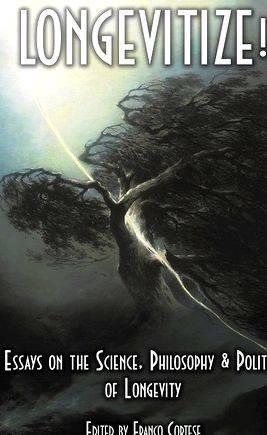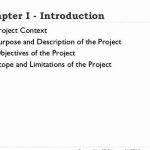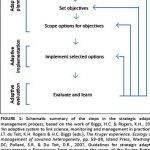Directions: You should read the passage several times, first for an overall understanding and then for the particular aspects mentioned in the essay prompt.
Sample essay 1: Upper level (score of 9)
Alexander uses various aspects of the language to represent herself, “a woman cracked by multiple migrations.” The diction, imagery, and figurative terms that Alexander employs create a clear picture for the reader of a woman who is questioning her life and what might have been.
There is an extended metaphor that runs throughout the piece that compares Alexander to something fragile and cracked, as glass. Words like “splintered” “shards” and “fractured” connote glass and all of its frailty. She sees herself as a mass of distinct pieces”a mass of faults”that cannot succeed in coming together, “fluid and whole” to complete her as a satisfied and happy person. In opposition to this “glass diction,” Alexander uses another metaphor that compares herself with a beautiful flower. This is the life that lives only in her memories and dreams, the life of a “dutiful wife. blooming in du season. in a sweet perpetual place.” The juxtaposition of these two metaphors accentuate the painful disparity between Alexander’s realized life, one of brokenness and disunity and her imagined life, one of happiness and peace. But. she soon points out that even this “good” life is “filled with ghosts” for it would have meant not having freedom; it would have been a “choke held.” Thus, these metaphors and the diction that brings them to life illustrate ambivalence in Alexander. On the one hand, she is dissatisfied with her present life and feels separated from her roots, culture, and self (she “try[s] to see her face” in the mirror but cannot) and on the other, she knows that if she had stayed in India, she would have been unhappy for different reasons and always longed for liberation and independence.
The image that Alexander presents of “mango trees fruit[ing] in the rough asphalt of upper Broadway” illustrate her conflict perfectly. The blossoming tree represents the life that would have been here in India and the asphalt of upper Broadway her present home. The ludicrousness of this event – a tropical tree flourishing in the middle of New York – emphasizes Alexander’s knowledge that her old life and actual life can never be reconciled.
The image of “selves jammed into my skin, multiple beings locked into the journeys of one body” further illustrate her ambivalence. She has various “selves,” all of who want different things from life. Unfortunately, she has only one life to live and must decide among her conflicting emotions and choose the path that she will take. The words “jammed into my skin” also show how painful this subject is for Alexander.
Alexander’s use of rhetorical questions and parallel structure also enhance her story “And what. ” in lines 19 and again in 26 introduce parallel paragraphs, the first explains her geographic uprooting, with a list of hometowns, and the second shows her cultural fracturing, with a list of languages she knows. “Odd shards” of these cultures survive in her mind but she cannot unify them into a pleasing whole. Rhetorical questions like “What could I ever be but a mass of faults, a fault mass?” She that Alexander is uncertain about the decisions she has made and the ones that she must make in the future.

She has “trembling hands” that cannot guide her to happiness.
Alexander’s account of her self examination ends without resolution – she allows her mind to “slip. back into the darkness, [into] the shelter of memory.” She is unable to resolve her problem and is not strong enough to confront it for very long. Thus ends the personal struggle of a woman torn between past and present, haunted by many selves.
For more information about the topics underlined in the passage, click on the word.
Explanations appear below:
Click on the arrow to clear all.
Click on the explanation box below to hide individual explanations.
The diction, imagery, and figurative terms
This sentence clearly shows that the essay writer has an idea of what Alexander is doing in her text, and offers a preview of how the text will be discussed in the essay.
There is an extended metaphor
Here, the writer not only mentions the use of a rhetorical device, but explores what that device is intended to represent.
She sees herself
The writer feels comfortable asserting what Alexander feels; evidence is offered to support this interpretation.
Thus, these metaphors and the diction
The writer exhibits good control over and variety in syntax, which makes the essay interesting and compelling. The rhetorical devices discussed (here metaphor and diction) are never simply cited, are always explained and supported.
The image that Alexander presents
A smooth transition that both extends and complicates the preceding discussion.
The ludicrousness of this event
writer keys in on the irony and tone inherent in Alexander’s figurative language.
Alexander’s use of. her story
Again, the essay writer uses a clear transition to continue the discussion. It is also important that the devices mentioned are defined and supported in the ensuing discussion.
Thus ends the personal struggle
The writer finishes the essay with a poetic concluding sentence that both ties up the preceding discussion and shows the essay writer’s own rhetorical capabilities.
This essay is an excellent response to this prompt because the student writer links specific analysis of language to the theme of fractured identity and to Alexander’s efforts to reconcile the fragments of that identity. In a straightforward introduction, the essay writer lists some devices that will be discussed, then proceeds to identify examples of these devices in Alexander’s text, and to say how these examples reveal the author’s complex struggle with identity.
Just before concluding the discussion, the writer introduces two new devices and says how these support Alexander’s purpose. Even though these are not mentioned in the writer’s opening paragraph (perhaps the student had extra time after completing the initial analysis, or perhaps these thoughts occurred to him or her later on), the discussion of these devices only strengthens the analysis. They are not discussed as deeply as the first devices, but because they support, rather than deviate from, the initial discussion, their inclusion is successful.
Advanced Placement English Language and Composition APCD. 2004 by the College Entrance Examination Board. Reprinted with permission. All rights reserved. collegeboard.com. This material may not be mass distributed, electronically or otherwise. This publication and any copies made from it may not be resold.
2007 Florida Virtual School All Rights Reserved.






 Youtube three month thesis proposal
Youtube three month thesis proposal Phd thesis proposal of maths education
Phd thesis proposal of maths education 3 chapters of thesis proposal
3 chapters of thesis proposal Project context sample thesis proposal
Project context sample thesis proposal Adaptive co management thesis proposal
Adaptive co management thesis proposal






